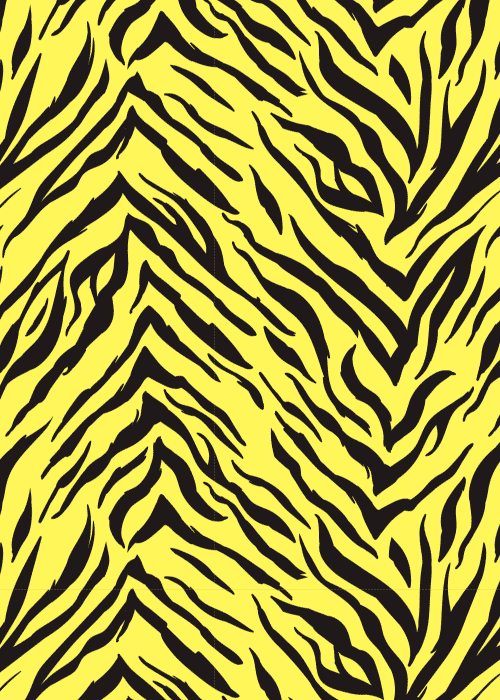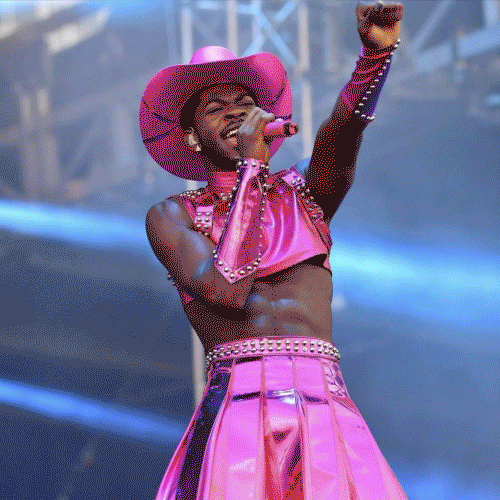‘Post-Binary but Polarizing’ : Interview with Hollow Eve
PHOTO: ALEJANDRO CARVAJAL
In Petaluma California, at the age of 14, a queer performer was born. Starting as a teen performer in The Phoenix Theater’s cast of the Rocky Horror Picture Show, Hollow Eve became introduced to the world of John Waters and BDSM. Then that world expanded into San Francisco, where they attended college and found a booming drag scene.
Hollow’s first time in drag was a parody political performance as Rush Limbaugh around 2003, as they recall it.
Fast-forward to over a decade later, where one night at a club in L.A., Hollow found themselves in conversation with season one winner and friend Vander Von Odd. Vander brought up Dragula and the need for Hollow’s voice to be heard, but Hollow remembers being hesitant, joking about how season 6 might be their time. It turned out that Vander’s influence did encourage Hollow to try out, and the rest is history.
On Dragula
“I am grateful to have been given the platform I was,” Hollow said of their experience on the show. “I get a lot of hate but also a lot of love. I’m post-binary but polarizing.”
Hollow explained that they wanted to go on Dragula, not just to compete and display their art, but largely to have hard conversations about privilege and gender and to discuss the representation of Trans, Non-binary and Women drag performers.
One of these moments came in the form of a passionate monologue where Hollow discussed competitor Priscilla Chambers’s use of the term “fishy,” which is used regularly by drag queens to refer to queens who look “feminine” or “passable.” Hollow’s point was that the word reduces what it is to be feminine to an offensive trope of a vulva, thus stigmatizing vulvas as “gross” and perpetuating the idea that vulvas are required to be a woman, while enforcing hard to reach beauty standards of “passability” on all.
“I didn't say, ‘Priscilla, you're canceled,’” Hollow said. “I just explained that using the term hurts people. Now it's everyone’s choice, knowing it hurts people, to continue [using it] or to stop using it. I'm not here to cancel people. Cancel culture can be toxic when it stops conversations. I hope what I said starts them.”
When it comes to tone, Hollow jokingly explained: “I’m Italian, passionate and intense.”
“I don't make art to appeal to everyone. I make it to unpack my life.”
Hollow’s final episode was complete with another fiery monologue, this one explaining their costume and the beauty of celebrating menstruation in a world that so often demonizes it and the people who experience it. Since the show, Hollow has made apologies on social media for erasing all vulva bearers from the conversation and conflating menstruation as a woman’s experience.
“Being on a reality competition is very straining and …. by the time I got to the finish of it, I felt there was a part of me that was lost” Hollow said. “Television rules are archaic and in the frustration of combating them, I ended up using language to refer to the menstruation cycle as only for women. This erased myself and so many others, and showed me how flawed my own thinking was in a time of stress. It showed me that I have hard work I continue to need to do to dismantle this language and thinking in my life. Society treats people like trash and shames their bodies for their natural process. I would not change my look, based on the rules of television, but expand my commentary to be inclusive.”
On Identity
Hollow, in drag is post-binary, meaning they acknowledge that gender has never been binary in the past, present or future, that gender diversity has always existed. They themselves are non-binary and don’t identify exclusively with any gender, and believe that one day there will be a world without the strain of enforced gender roles, a world where people can live authentically as who they are - where people are just people.
“Gender identities as roles can’t destroy themselves until everyone is equal because with equality, over-defining gender becomes meaningless,” Hollow said.
Not surprisingly, Hollow’s identity and ideas about gender directly influence their drag.
“What my drag concept was - when I named myself Hollow - was a space to be filled, to unpack all genders, and embody whichever gender I need in order to create,” Hollow said. “It also turns into a cheeky pickup line: ‘Hi, I’m Hollow, a space to be filled.’ Most people who walk through the world perceive me as a woman - that’s how I am treated, but I just want to be seen as an equal person … or maybe a creature.”
Throughout Hollow’s career, they have been redefining what it means to do drag. Hollow explained that their goal is not to shock but to incite hard questions and meaningful conversations about identity in the queer community.
PHOTO: ERIC MAGNUSSEN
“Shock for the sake of shock isn't interesting unless you’re into electrocution,” Hollow said jokingly. “To limit drag and say it’s only one thing, is to erase most performers. I don't make art to appeal to everyone. I make it to unpack my life. Some people think what I do promotes self-harm, [but] there is a difference between self harm and body modification executed with knowledge. It is not my intention to emotionally relieve myself through self-harm, but it brings forward trauma in some, which has created this conversation. I find that most people who think this have never seen me perform live.”
For one performance, Hollow covered themself in hundreds of living worms and dead cockroaches. A funeral was held for each of the roaches, and Hollow explained that the performance asked ‘what is the value of life’ by taking it, mourning it and allowing the worms to eat them in a cycle of birth and death.
Hollow described their most intense performance, an installation done with fellow performer God’s Little Princess. The 45-minute project won the pageant they were performing for.
“We decided to unpack the shame of gender bathrooms, the shame of breastfeeding in public, and the shame of queer sex being pushed into bathrooms by building an outhouse,” Eve said. “We had to do it outside because it would be illegal to do it in the bar. And it was illegal to do it on the street as well, but we did it.
It started with me sitting on the toilet, naked, masturbating. Once I came, God’s Little Princess was born out of the toilet underneath me.
She started to explore her dysmorphia by gently touching my breasts until she started breastfeeding from me and that made me really uncomfortable because I have body dysmorphia with my breasts.
She starts getting more and more upset, wanting breasts of her own. She starts scratching and tearing at my breast that she’s feeding from while I start cutting my other breast because I don’t want children, I don’t want this breast, I don’t want this ability to make children, I don’t want this responsibility.
Then she gives up and slaps my breasts and gets up and stands above me and pisses down my breasts that I had been cutting. So there was blood and piss dripping down my body. She stands above me and masturbates while I push my boobs behind my body then let them hang [over and over]. And when she’s done masturbating, or gives up because it’s futile, she starts tucking her penis and then letting it hang [over and over].
And so we’re both sitting there just trying to change the body that we have, then we face and watch each other do that. Then we can see each other’s dysmorphia and we can see the way that we were the same. So I helped her down from standing on top of the toilet then we proceeded to destroy the interior of the outhouse until nothing was left but a box frame and a toilet. We were just literally kicking shingles out and screaming in rage, breaking free from the little structure.
At the end of it, she was shaking with fear, and I just held her while I sat on the toilet and rocked her and told her everything was gonna be okay - in front of everyone with no shame, no walls to define who and what we were.”
The Changing Scene
PHOTO: RJ MUNA
Since the show, Hollow has had the ability to travel to new and exciting places to perform and meet other queer performers, making sure to go to Boston to be with fellow Dragula Season 3 castmate, Violencia Exclamation Point, as frequently as possible.
“I was just in Denver performing at KOVEN, an entirely trans show, being run by trans and non-binary POC,” Hollow said. “San Francisco has a pretty diverse scene, it’s not amplified as much as other scenes, [but there is] a long history of Trans, Non-binary and women and on its stages.”
Hollow also regularly asks that Trans and Non-binary people be able to attend their shows for free, a concept in practice at different queer bars. Hollow believes this is an important step in creating safe spaces for trans people within our community, by inviting them to the front and placing importance on them taking space.
Hollow believes the drag scene is changing as visibility is given to POC Trans, Non-binary, and Women performers. Hollow now lives in L.A., and said that diverse stages are growing in most scenes. The real test of a performance scene or space’s commitment to diversity is not just when they have POC Trans, Non-binary and Women performers, but when POC Trans, Non-binary and Women are running and producing successful shows.
Despite the gradual reckoning of the ‘other’ types of drag, there is still much work to be done in the areas of inclusivity and justice.
“We need spaces for people to express themselves, to fail without being shamed, spaces where they can learn and grow,” Hollow said. “Drag is one of the most visible forms of queer storytelling and the solution to building community and family in a disconnected world is storytelling. It’s how we created language. It’s who we are.”
—
Luke Gardner is a radical journalist and student who lives in metro Atlanta. To see his work or for contact information click here.
Archive
- September 2025
- August 2025
- May 2025
- February 2025
- November 2024
- October 2024
- September 2024
- August 2024
- July 2024
- June 2024
- May 2024
- April 2024
- October 2023
- July 2023
- June 2023
- May 2023
- April 2023
- March 2023
- February 2023
- June 2022
- April 2022
- March 2022
- January 2022
- December 2021
- October 2021
- September 2021
- August 2021
- July 2021
- June 2021
- May 2021
- April 2021
- March 2021
- February 2021
- January 2021
- December 2020
- October 2020
- September 2020
- August 2020
- July 2020
- June 2020
- May 2020
- April 2020
- March 2020
- February 2020
- January 2020
- December 2019
- November 2019
- October 2019
- September 2019
- August 2019
- July 2019
- June 2019
- May 2019
- April 2019
- March 2019
- February 2019
- January 2019
- December 2018
- November 2018
- October 2018
- September 2018
- August 2018
- July 2018
- June 2018
- May 2018
- April 2018
- March 2018
- February 2018
- January 2018
- December 2017
- November 2017
- October 2017
- September 2017
- August 2017
- July 2017
- June 2017
- May 2017
- April 2017
- March 2017
- February 2017
- January 2017
- December 2015
- November 2015
- October 2015
- September 2015
- August 2015
- July 2015
- June 2015
- May 2015
- April 2015











